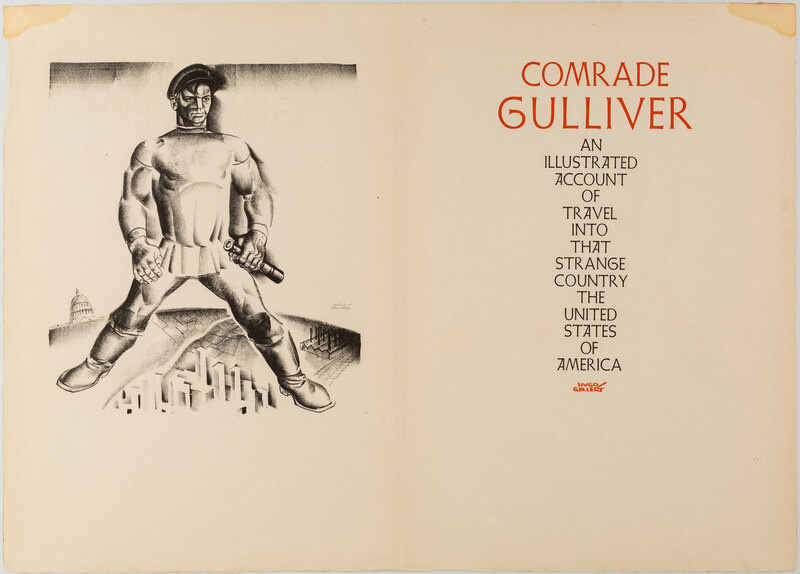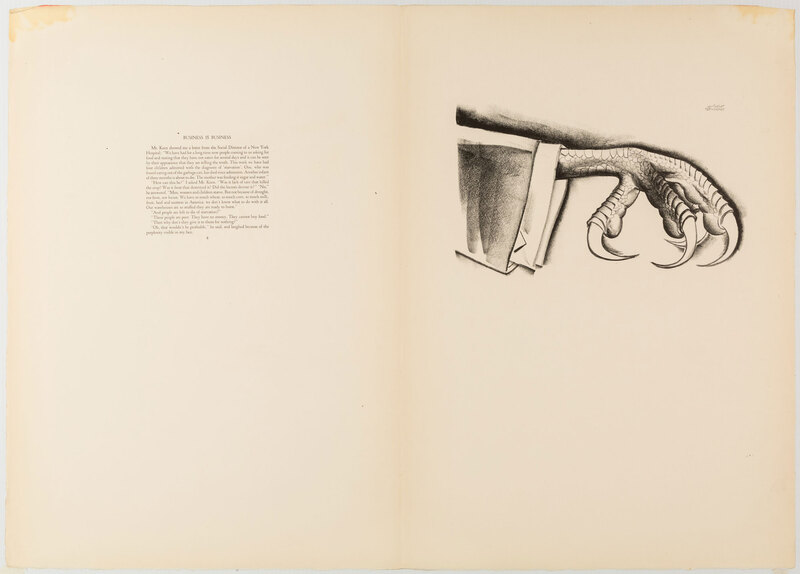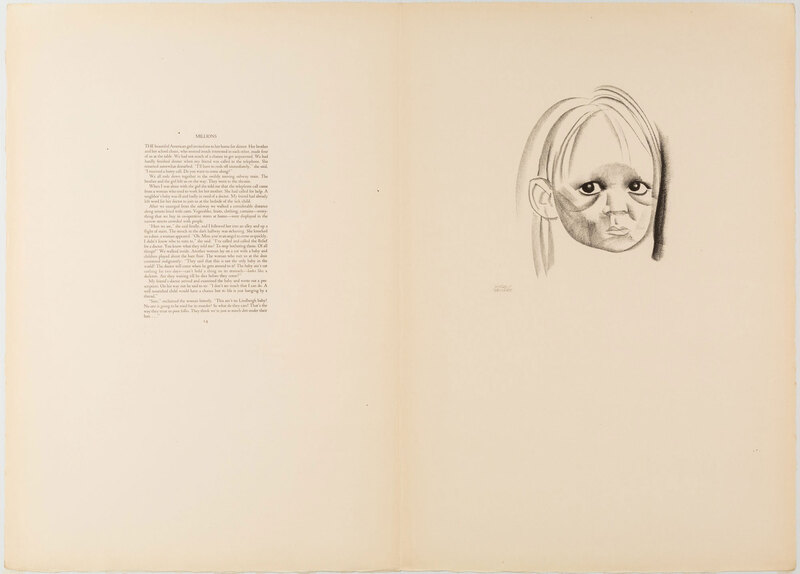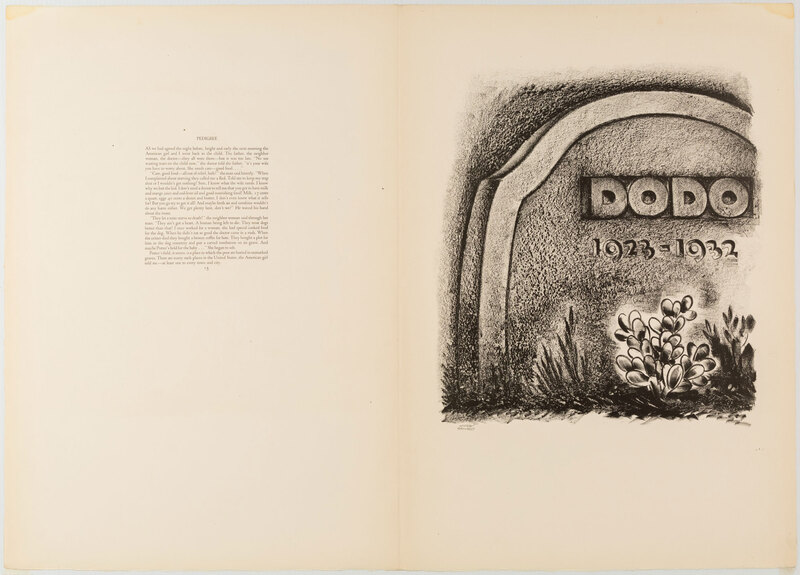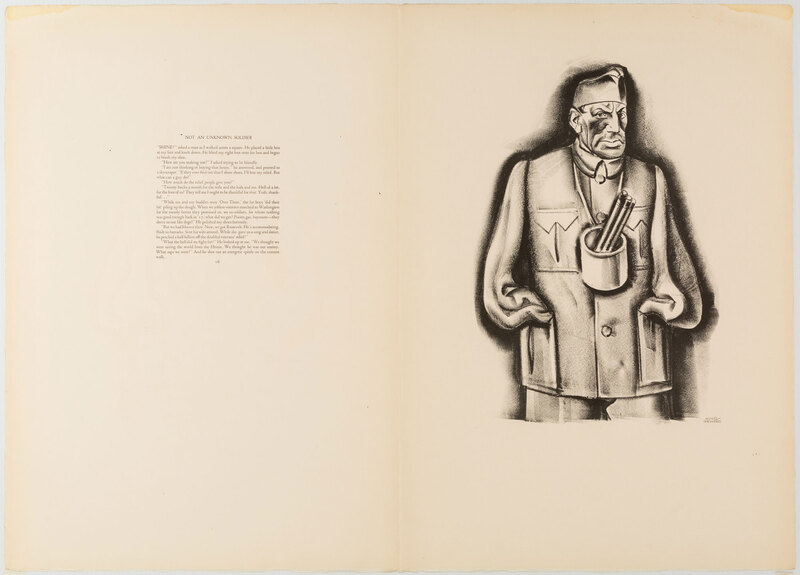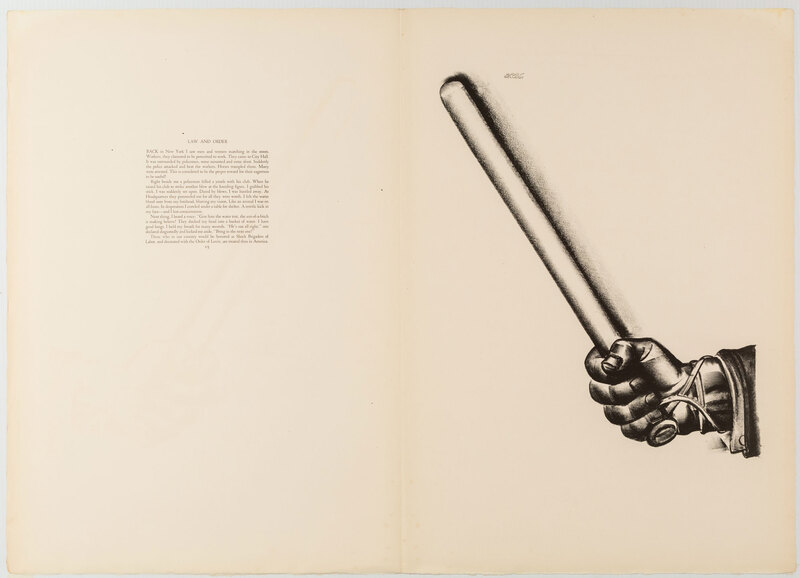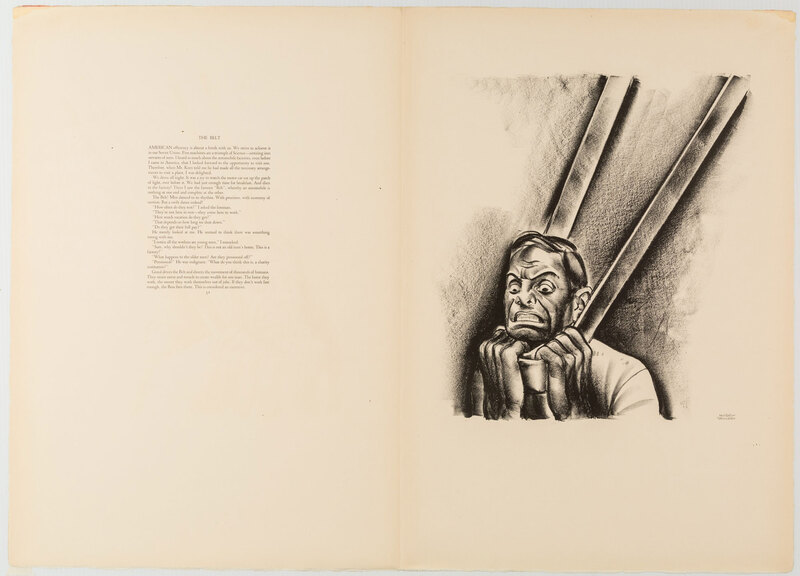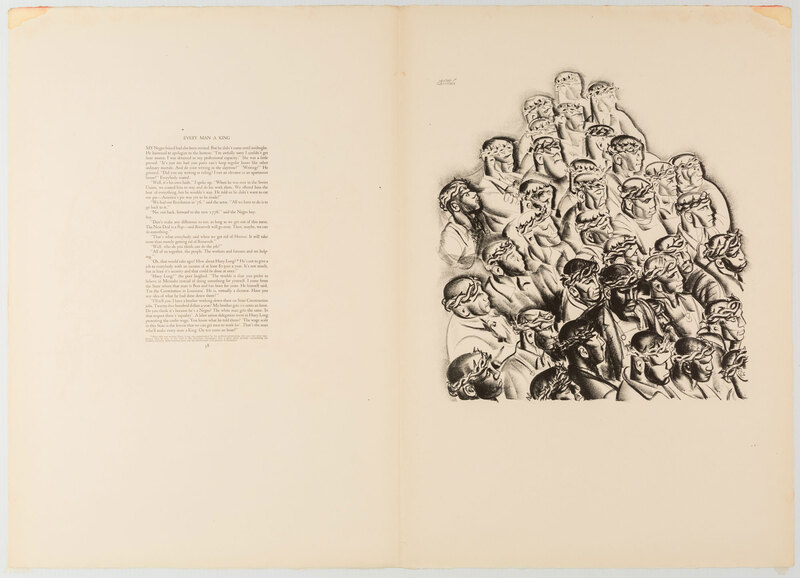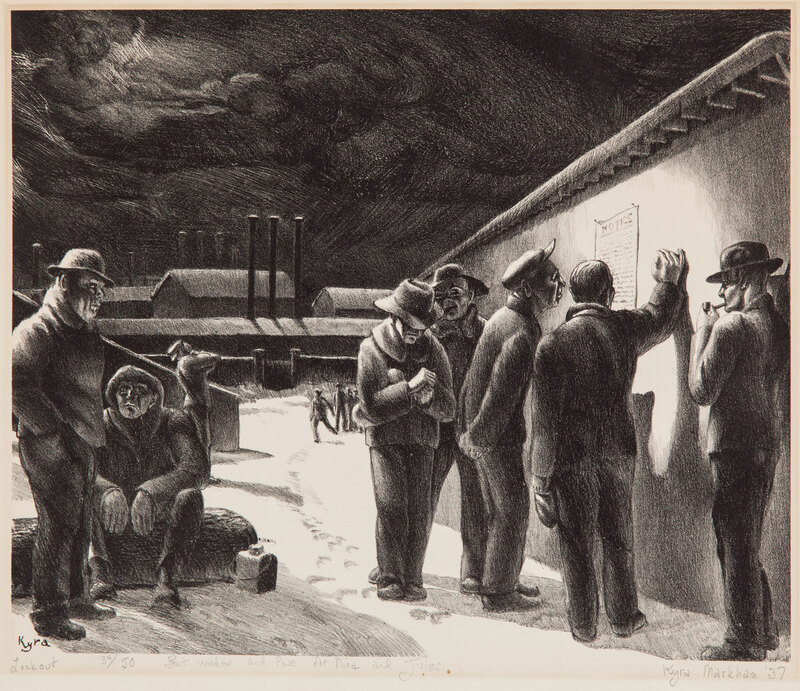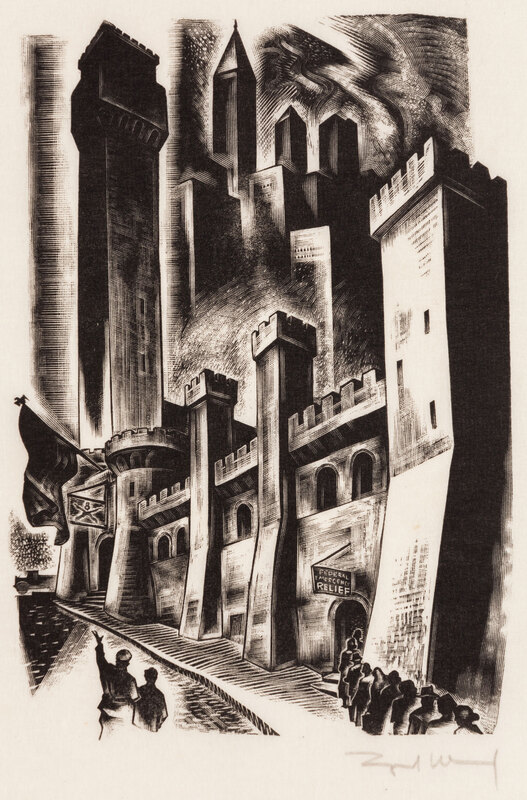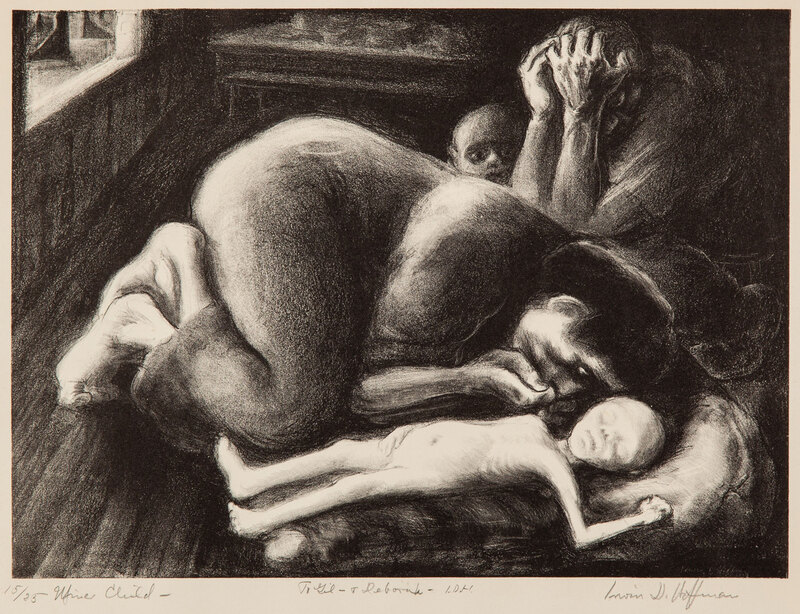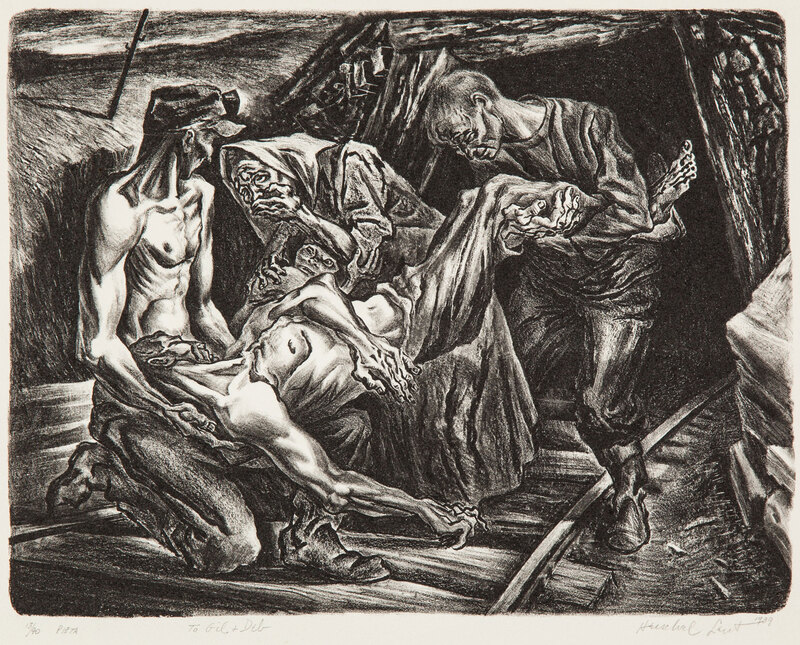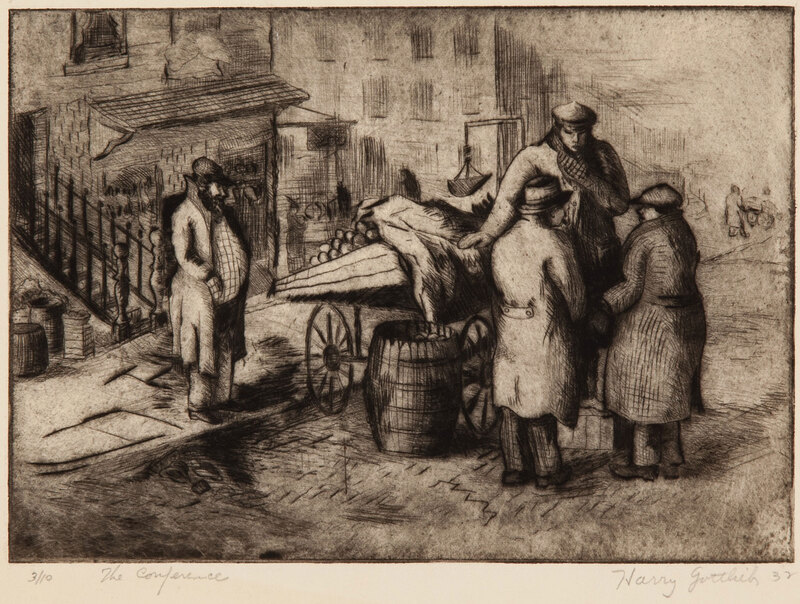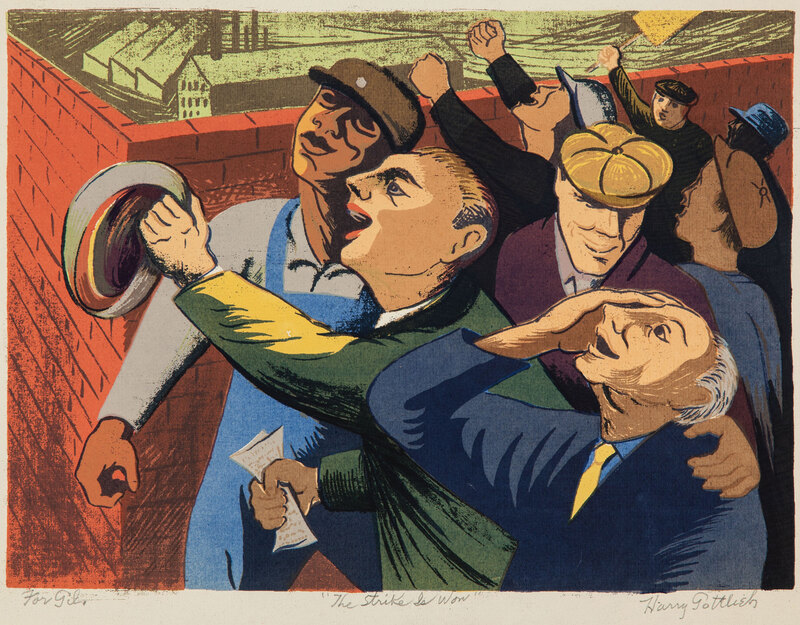Protest
Americans protested the situation in which they found themselves during the Great Depression. Food riots and hunger marches, a rise in labor unions and calls for fair wages for workers all created a climate in which New Deal artists created artwork sympathetic to the plight of their fellow struggling Americans.
What do you imagine when you think about the Great Depression? We understandably associate this decade with poverty, hunger, breadlines and despair. More than any other image, the photograph Migrant Mother (1936) by Dorothea Lange (American, 1895 – 1965) has come to represent this impression of the decade. But Americans were not just despairing in the 1930s—they were also angry. The question of hunger inspired particular outrage, and Americans participated in many hunger marches and small food riots. In fact, the United States was actually experiencing a surplus of agricultural goods, but, in order to drive down prices, Roosevelt’s administration paid people to slaughter their hogs or let their fields go fallow. This action saved farmers from bankruptcy, but enraged a hungry population.
The situation in the industrial labor force was no better. As unemployment rates skyrocketed, many Americans did not understand why anyone living in a country with the largest industrial system in the world should go without work. For those who kept their jobs, real wages declined by over 30%. Some Americans saw capitalism itself as the problem: the Communist Party of America grew to around 65,000 members, and the radical priest Charles E. Coughlin (American, 1891 – 1979) and populist Huey Long (American, 1893 – 1935) gained huge followings for their critiques of the financial system. There was also a new push for labor unions, whose power had been severely damaged in the post-First World War era. The Congress of Industrial Organizations was founded in 1935, which united workers across trades, race and sex. One song celebrating the CIO proudly declared “We will shout and yell and fight like hell.” That same year, Congress passed the Wagner Act, which strengthened union power and led to a forty-year rise in wages and workers’ standard of living.
It was not uncommon for New Deal artists to have intense sympathy with the demands for labor rights, and they used their art to advocate change. This drove, for example, the embrace of social realism, which often sympathized with the harsh reality of workers’ lives in the Depression. Strikes, industrial accidents and hunger all frequently appear in New Deal art. But administrators at the federal relief programs established for artists typically expected the production of art that was celebratory and inspiring, not depressing or radically minded—even as critics of these programs argued that taxpayers were paying for anti-American propaganda.
––CCG
Hugo Gellert (American, born Hungary, 1892 – 1985)
Comrade Gulliver, 1935
lithograph with letterpress plates; 23 ¼ x 16”
Binghamton University Art Museum, 2016.4.45
gift of Gil and Deborah Williams
“Business Is Business”
“Millions”
“Pedigree”
“Not an Unknown Soldier”
“Law and Order”
“The Belt”
“Every Man a King”
Hugo Gellert, born Hugo Gruenbaum, immigrated to New York City from Hungary in 1906 and became a well-known artist and satirist. He got his start during the First World War, when he published many antiwar cartoons and began contributing to The Masses, a radical magazine. In 1925, he joined The New York Times as a staff artist. Gellert became a member of the American Communist party around the time of its founding in 1919 and became more politically active over the course of the 1920s.
His political beliefs are on full display in Comrade Gulliver, a satirical look at the economic and social injustices of the Great Depression. In these seven excerpts, Gellert attacked New Deal policies that slaughtered pigs and burned crops rather than feed hungry Americans, criticized anti-labor practices, wrote about veterans who were attacked by federal troops during the Bonus March and detailed Huey Long's populist campaign to “make every man a king.”
––CCG
Kyra Markham (American, 1891 – 1967)
Lockout, 1937
lithograph; 12 x 14 ¾”
Binghamton University Art Museum, 2016.4.351
gift of Gil and Deborah Williams
Kyra Markham was born in Chicago, where she studied and developed her technique in years before the First World War. During the 1930s, she adopted a social realist style, and her artwork became more and more popular. She worked for the Federal Art Project between 1935 and 1937, producing a number of lithographs, including Lockout.
In this piece, Markham shows a group of men crowded around a notice that informs them of a labor lockout, which sometimes follows an unsuccessful union negotiation. The nighttime sky is ominous, the scene fitfully illuminated. In the background loom the smokestacks of the factory, now quiet and inactive, its gate locked shut. Markham clearly wants us to empathize with the plight of the workers: the snow on the ground begs the viewer to ask, how will these men feed their families in the dead of winter?
––CCG
Lynd Kendall Ward (American, 1905 – 1985)
"Untitled," from the portfolio Woodcut Novel Prints, 1937
wood engraving; 6 ¾ x 4 ¾”
Binghamton University Art Museum, 2018.2.2
gift of Gil and Deborah Williams
Lynd Kendall Ward was a native of Chicago who later studied art in New York and Leipzig, Germany. Inspired by the artist Frans Masreel (Belgian, 1889 – 1972), he began working on wordless novels, using only wood engravings to tell a story. His first novel, Gods’ Man (1929) is a direct ancestor of today’s graphic novels. In 1937, Ward became the Director of the Graphic Arts Division of the Federal Art Project.
Although they had no words, Ward’s novels clearly conveyed his politics—they included images of corrupt policemen and politicians, the legacy of slavery, joblessness and domestic violence. In this engraving, which first appeared in his 1937 novel Vertigo, a series of figures line up along the imposing, fortress-like wall of an armory under a sign that reads “Federal Emergency Relief.” An American flag hangs further down the street. Above the wall, huge skyscrapers stretch into the sky. This could be read as a critique of the American system, which protects Wall Street but provides very little money for the average citizen.
––CCG
Irwin D. Hoffman (American, 1901 – 1989)
Mine Child, ca. 1938
lithograph; 11 ½ x 16”
Binghamton University Art Museum, 2016.4.160
gift of Gil and Deborah Williams
Facing the harsh reality of the Great Depression, many artists in the 1930s depicted hardships of the working class. In this lithograph, Irwin D. Hoffman portrays an anguished family mourning the death of a young child. The artist’s two brothers owned a mining company, and Hoffman drew inspiration from the scenes he witnessed in mining towns in the US, Mexico and Puerto Rico. The title of this piece may have two meanings—it could represent a mother’s lament or literally refer to a child killed by the harsh life of a mining family.
––CCG
Herschel Levit (American, 1912 – 1986)
Pietà, ca. 1939
lithograph; 12 ¼ x 15 ¾”
Binghamton University Art Museum, 2016.4.179
gift of Gil and Deborah Williams
Levit borrows the title and composition of this lithograph from the Christian iconography of the pietà, in which the Virgin Mary mournfully holds the body of her son, Jesus, after his crucifixion. The word pietà means “pity” or “compassion.” One of the most famous examples of this scene was created by Michelangelo in the late 15th century.
In Levit’s interpretation, a miner’s body replaces that of Jesus, and it is two of his fellow laborers who cradle his body as his wife and child watch on, grief-stricken. Due to the incredibly dangerous conditions that miners faced, their deaths were often used as a symbol of labor issues in 20th-century art. Knowing the religious origins of the pietà, we can read the miner’s death, like that of Jesus, as a sacrifice—in this case, to the country’s insatiable need for raw materials for industrialization.
––CCG
Harry Gottlieb (American, born Romania, 1895 – 1992)
Conference, ca. 1930
drypoint; 9 ½ x 12 ¾”
Binghamton University Art Museum, 2016.4.247
gift of Gil and Deborah Williams
Interpretive text has not been prepared for this object.
Harry Gottlieb (American, born Romania, 1895 – 1992)
The Strike is Won, 1940
silkscreen; 19 x 25”
Binghamton University Art Museum, 2016.4.243
gift of Gil and Deborah Williams
Harry Gottlieb was born in Romania and with his family immigrated first to Ireland before settling in Minneapolis in 1907, where he studied art at the Minneapolis Institute of Arts. He moved to New York City in 1918 after working as an illustrator for the US Navy during the First World War. In 1935, he was hired by the Graphic Arts Division of the Federal Art Project.
In this screenprint, Gottlieb, who frequently focused on industrial laborers due to his socialist beliefs, imagines the victorious conclusion of a labor union strike. While he portrays a group of multiracial workers cheering outside the brick walls of a factory visible in the background, this kind of cross-racial unionism was rare in fact in the US due to the racial conservatism of most unions. Gottlieb therefore uses his art to imagine an America in which workers unite across racial lines to advocate for their rights.
––CCG
